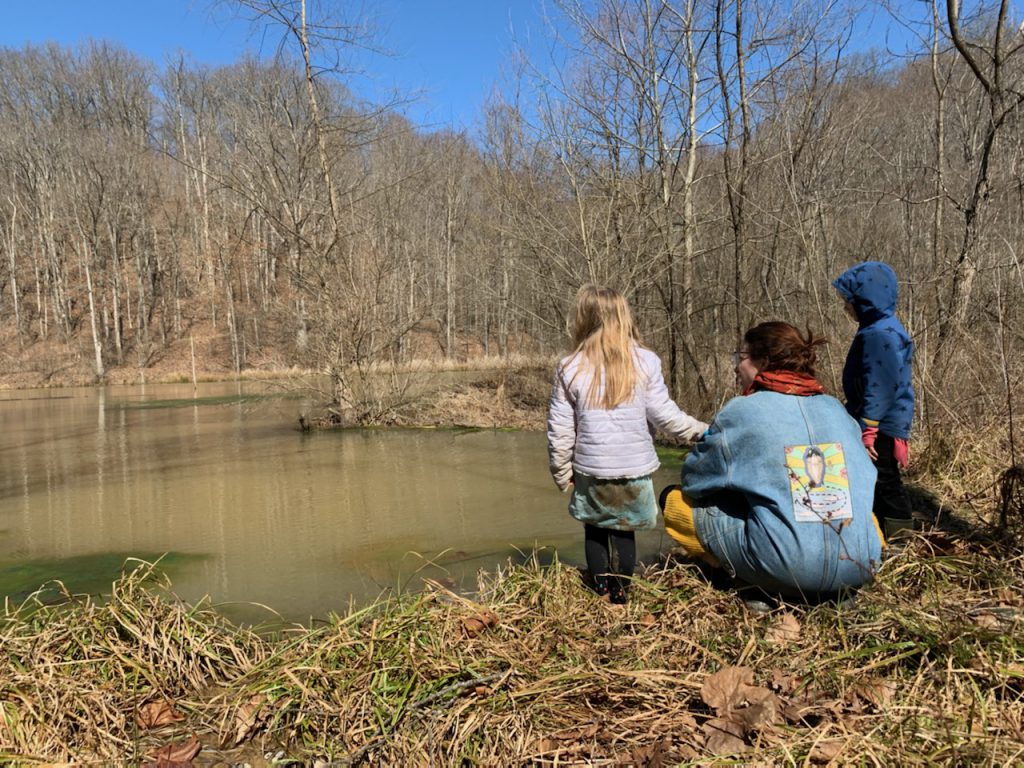
Have you heard the frog songs coming from ponds and puddles lately? In early spring
, frogs and salamanders travel to water to lay eggs. Spring pools are a critical part of their life cycle. Join us on this week’s virtual field trip to learn how it works!To learn about vernal pools:
Join our Zoom field trip on Friday, March at 10:30 am to see a vernal pool in action.
Read more about eggs and tadpoles in the rest of this post.
Visit a vernal pool yourself. What evidence of animals do you find?
Virtual Field Trip: Friday, March 26, 2021 at 10:30 am
Every Friday from 10:30 to 11:15 AM, we hold a Zoom call live from the woods for anyone who wants to join. This week, we’ll visit a vernal pool with some nets. What do you think we’ll find living there?
If you haven’t registered for our field trips before, register here to get the link in your email:
Teachers: Your class is welcome to join this public virtual field trip. You can also contact us to schedule a virtual field trip just for your class, which sometimes works better. Email darcy@ruralaction.org.
Amphibian Life Cycles
Last March, we wrote about vernal pools and what lives in them. But why are these pools so important for the frogs and salamanders in our forests?
Vernal pools are small ponds that form in the spring rain. They dry up in early summer when the rain slows down. Fish don’t live in them, and they look more like puddles than anything else. But, if you approach them slowly and quietly, you’ll notice that they are full of life.
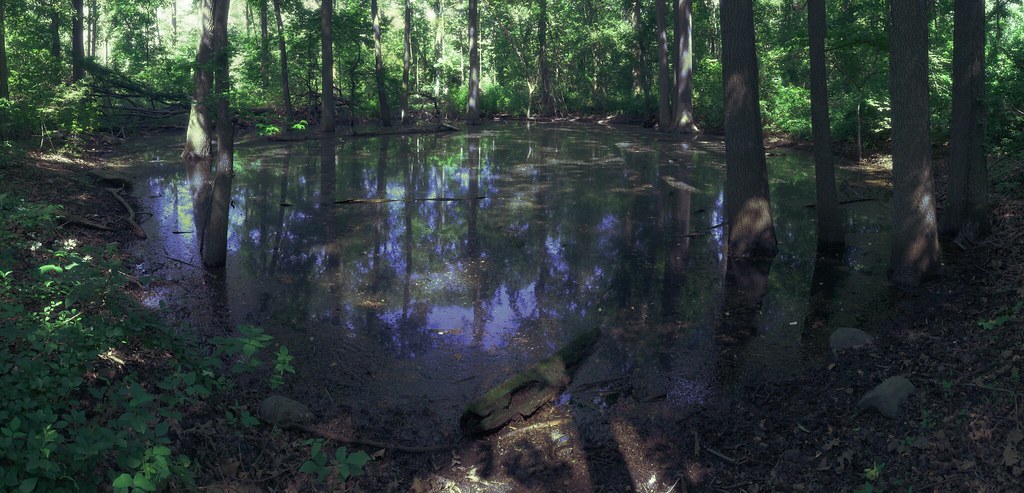
A long time ago, about 200 million years, amphibians (frogs and salamanders) became the first animals to walk the earth. They grew legs and tough skin so they could leave the water. This helped them find food and less crowded homes.
Amphibians sometimes have lungs. But they mostly breathe through their skin. Their skin is smooth and covered with mucus, so they can filter oxygen from the air. They have to stay damp, even though they don’t have to stay in the water anymore.
The ability to leave the water became the blueprint for life on earth. And amphibians still go back and forth between water and land today.
Salamanders
Newts and salamanders are some of the coolest, most secretive animals in Ohio. Most species spend most of their days hiding under fallen trees or leaves. This keeps them cool and wet. At night, they come out to eat. They’ll devour bugs, shrimp, and pretty much anything that moves.
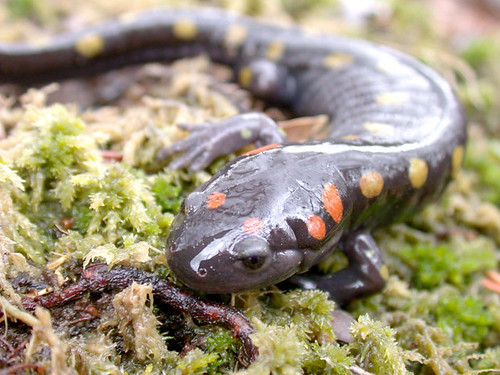
On the first warm
, rainy nights of spring, hordes of salamanders march to vernal pools. They meet to breed and lay their eggs. Typically they attach their eggs to sticks and plants in the pool, like in this picture.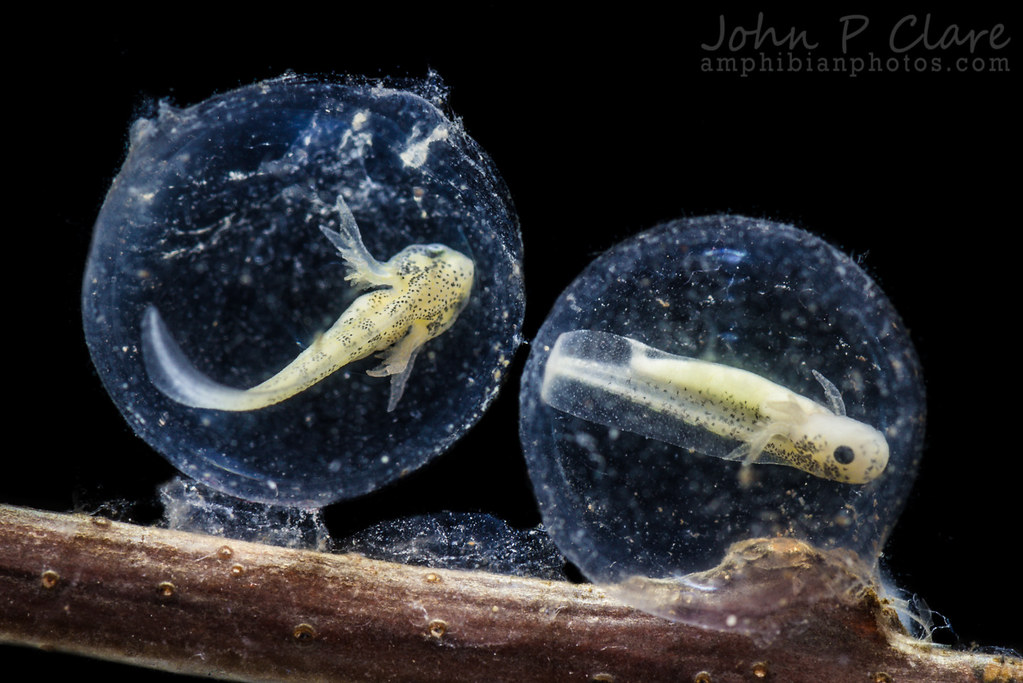
Because there are no fish in vernal pools, salamander eggs are less likely to get eaten there!
Once the eggs hatch, the salamander larvae then swim around for a little while. Their limbs grow. They munch on the insect larvae they find inside the pools.
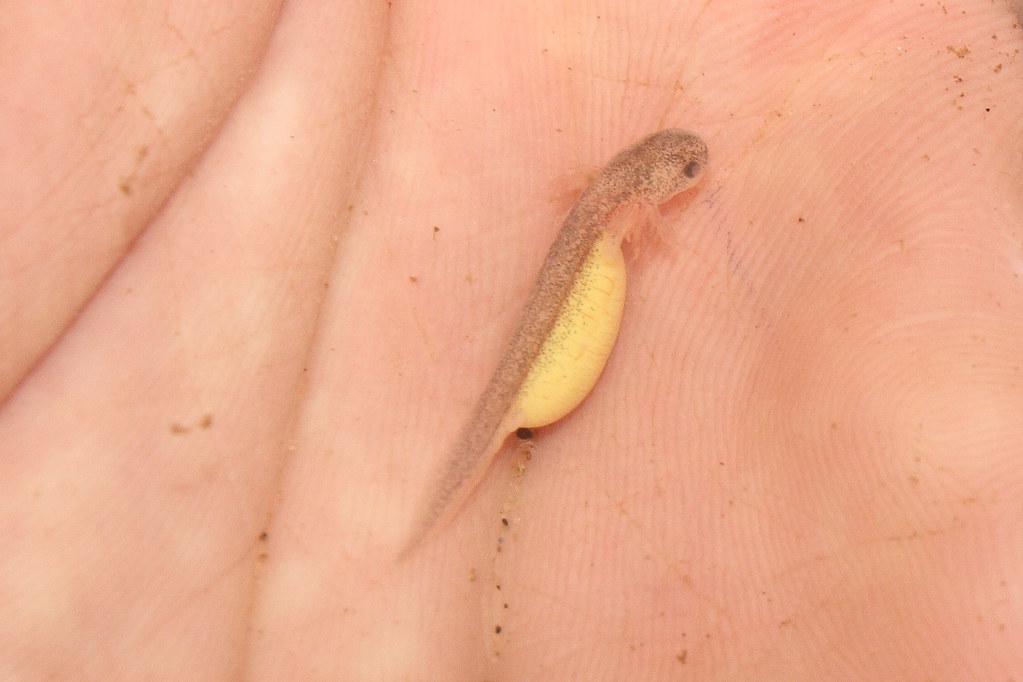
Once salamanders have legs
, they move out of the pool and into the forest floor. Usually, they stay there the rest of their lives. They only return to water when it’s their turn to lay eggs each spring.The red-spotted newt is special because it changes color as it grows. Once it crawls onto land, it turns bright orange. It lives in the forest for 3 or 4 years like this.
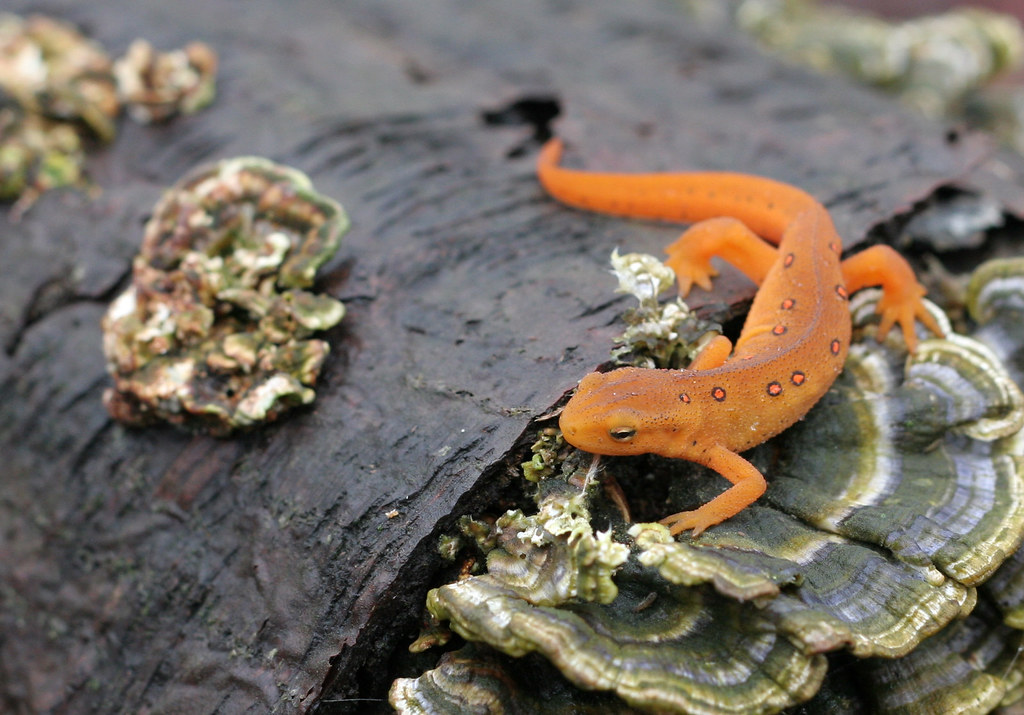
Then its skin changes color to yellow-brown. At this adult age
, these newts go back to living in water! You can see them swimming around pools hunting and protecting their eggs.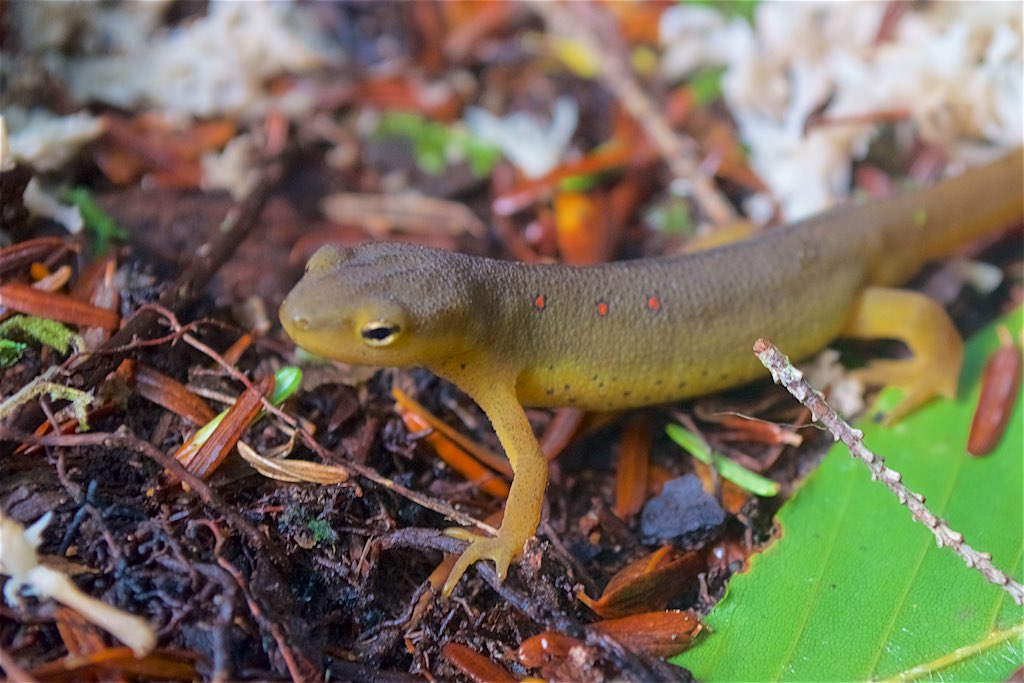
Some salamanders do things slightly differently. Mud puppies, hellbenders, and dusky salamanders live their whole life cycle in streams and rivers. Red-backed salamanders lay their eggs on land, and they don’t hatch until the larva have grown adult legs!
For the rest of Ohio’s salamanders, though, vernal pools are essential.
Wood Frogs
Just like salamanders, many frogs use vernal pools for their eggs. Wood frogs lay their eggs in vernal pools in March. Ever hear a “quacking” sound from a pool, but don’t see any ducks around? It’s probably a wood frog!
Wood frog tadpoles spend their first few months in the pool
, growing strong.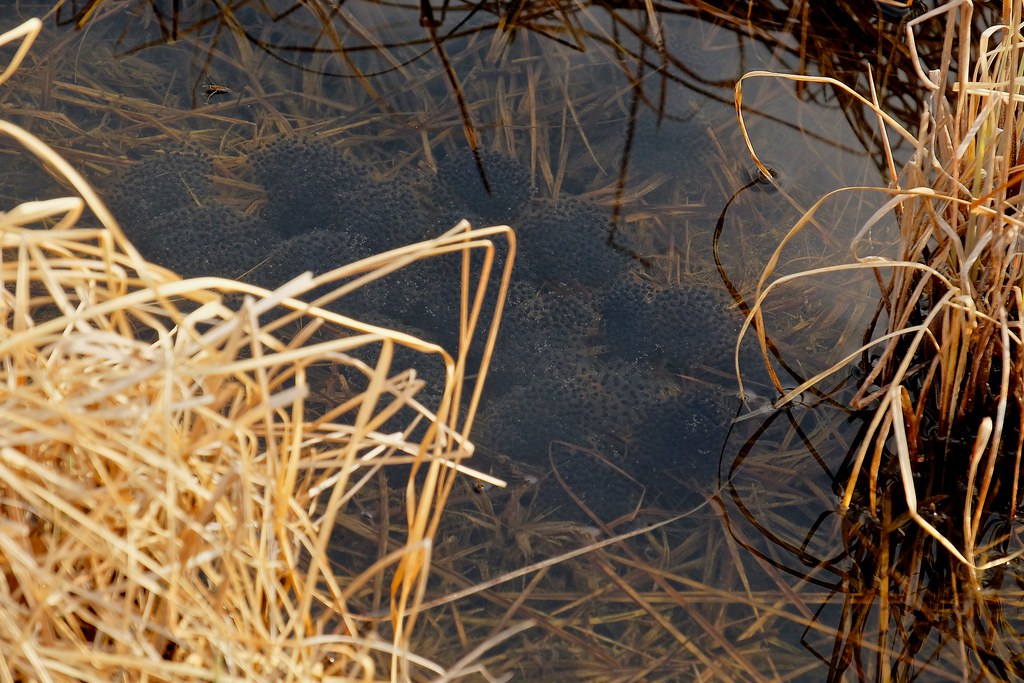
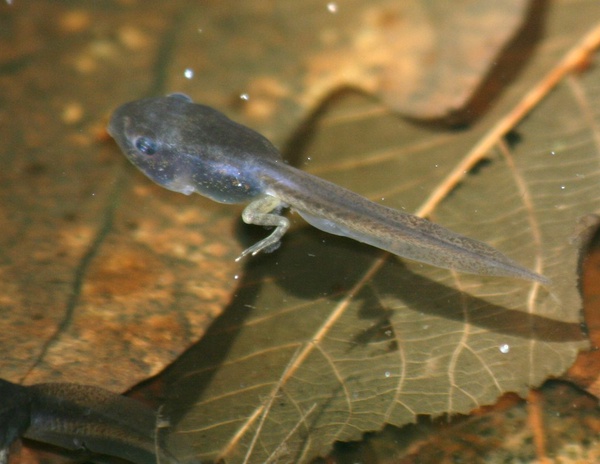
Eventually, they absorb their tadpole tail into the rest of their body. Scientists are studying the chemical that lets frogs absorb their tail. They hope humans might be able to use it to fight cancer!
Once they look like frogs, they are ready to hop out into the wild.
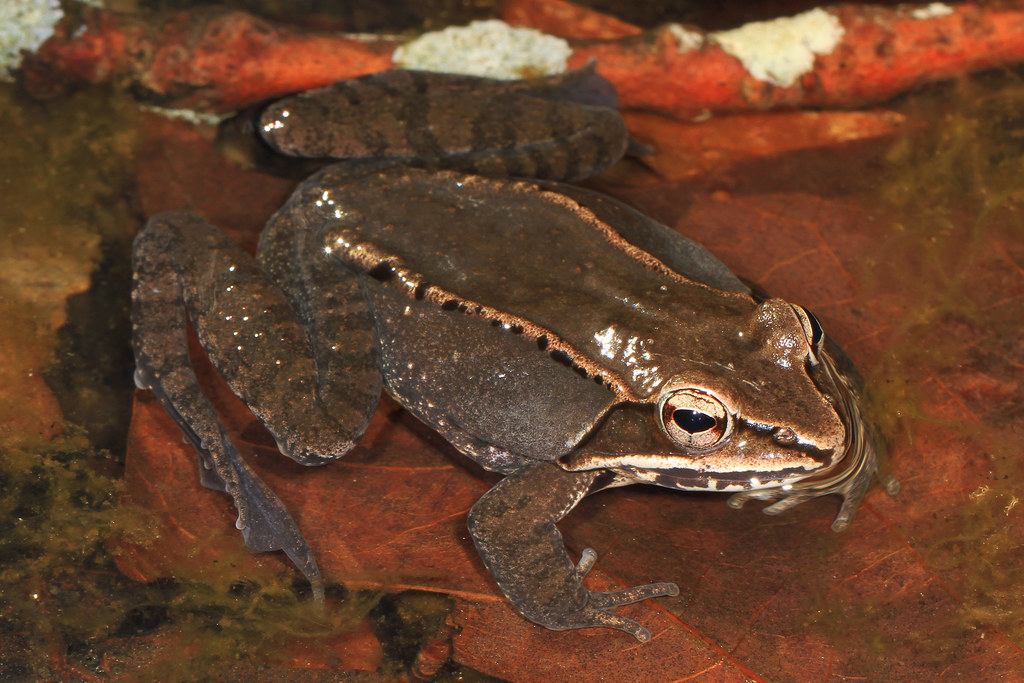
Gambling with weather
While vernal pools don’t last more than a few months
, they are very important for the life cycles of some of our most interesting animals.Using vernal pools for your eggs is a gamble, though. If rain and temperatures aren’t right, you might lose your eggs or tadpoles! Climate change has made weather less predictable for frogs and tadpoles.
If there isn’t enough rain…
Frogs and salamanders will find their usual pools are dry. They might have to lay their eggs in ponds or lakes, where there are more predators. This means the chance that the eggs will survive is lower.
If there is too much rain…
They might lay their eggs in a puddle that isn’t deep enough. This means the pool could dry up before the babies are able to grow.
Your turn: explore a vernal pool
Look for flat places in the forest where vernal pools can form. Slowly and quietly approach it.
If you are patient
, you may get to see some things movin’ around! Check out our post last year for ideas on where to look, and what you might find:Turn over some logs around the pools to spot some grown-up amphibians.
Look through the leaves and plants for eggs.
And share what you find in the comments!
Get your hands wet and dirty before touching frogs and salamanders!
Dip your hands in the frog’s vernal pool or pond. Remember